LYMAN D-7
gunpowder
precision reloading scale
maker: Lyman, Middletown, Connecticut, U.S.A.
received as a gift from Jan and Gerrie van Loenen

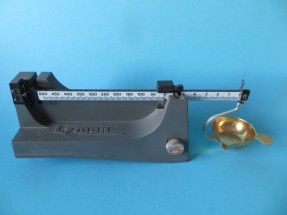
Lyman gunpowder scale
| This is a very precise weighing scale to weigh the right amount of gunpowder in case you want to refill, charge, or load, a bullet or cartridge for your firearm. This precision reloading scale is made by Lyman from Middletown in Connecticut, USA. I (yet) don't know how old this gunpowder scale is. One can still buy a photocopy of the operating instructions on eBay. Old handbooks of Lyman are available on the internet with detailed information about the proper amount of gunpowder to charge different types of ammo, cartridges and shotshells for different brands of guns and pistols. The weighing beam pivots at a knive edge bearing. The scale is very precise and sensitive. The housing of the scale has a rotary knob to operate an excenter. A vertical rod rests at this excenter. By rotating the knob clockwise, the excenter brings the rod upwards and this lifts the knife-shaped axis of the weighing arm from its bearing pans. This prevents wear of the knive edge bearing when the scale is not in use but is still moved by wind or drafts. The here presented gunpowder scale weighs in grains. The weighing range is 505 grains.
| 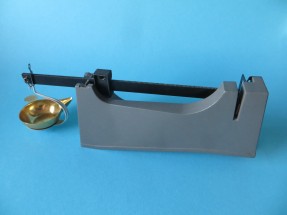
back of the scale
|
At the left 500 grains, plus 5 grains at the right, makes a total of 505 grains. 1 grain = 0.06479891 gram, rounded to 64.799 milligrams, or about 0.065 grams. 7000 grains = 1 pound = 16 ounces. And so 1 grain is equal to 0.002285714 oz. At the left the weighing arm has a scale of 500 grains with stripes every 5 grains. At the right the weighing arm has a scale of 5 grains, here every stripe is equal to one tenth of a grain. There exists also a metrical version weighing in parts of grams. The left scale ranges from 0 to 32.50 grams, every stripe represents 0.25 grams. The entire scale at the right of the knife edge bearing is 0.25 grams in total, and every stripe is 0.005 grams (five thousandth of a gram!). The weighing range of this grams version is therefore 32.75 grams. Before the actual weighing one starts to adjust the scale to zero at the left by turning the screw under the housing of the scale. Ensure that the adjustable poises, the heavy and the light weight, are as much as possible at the right on the weighing arm. To weigh a certain amount of gunpowder, first place the heavy poise to the left just below, almost at, the wanted number of grains, and use the light weight to fine tune the wanted number of grains. Now fill the pan with just enough gunpowder until the pointer of the weighing arm indicates zero. Now you have the wanted amount of gunpowder in grains. Two magnets are inside the aluminum housing at the left on both sides of the gap, they are damping the movement of the scale beam by exercising a force on the small copper part. (Search term: 'Eddy current brake'or 'magnetic damping'). The precision powder scale of Lee Precision also has magnetic damping, see the Lee powder scale.
Below some more pictures of this precise Lyman gunpowder scale.
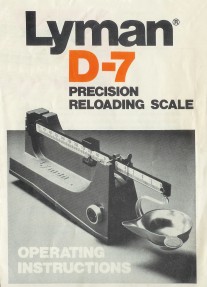
operating instructions of
the gunpowder scale
| 
left the scale up to 500 grains, subdivided per 5 grains
right a scale up to 5 grains, subdivided per tenth grain
|

operating instructions of
the gunpowder scale
|
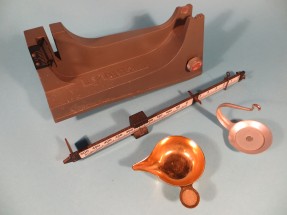
the partly disassembled scale
| 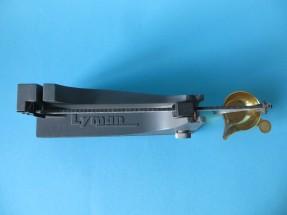
from above, the magnetic damper is near the gap left
| 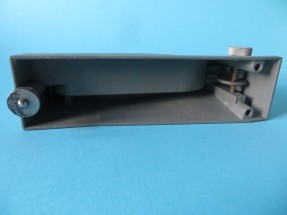
bottom of the scale house at the left the zero leveling
screw and at the right the excenter and its knob
|

left scale up to 32.50 grams, subdivided per 0.25 grams
right a scale up to 0.25 grams, subdivided per 0.005 grams
|
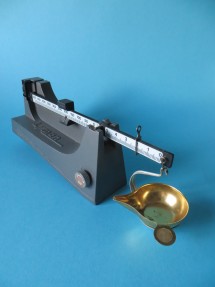
the gunpowder scale seems to be
made for right handed people
|
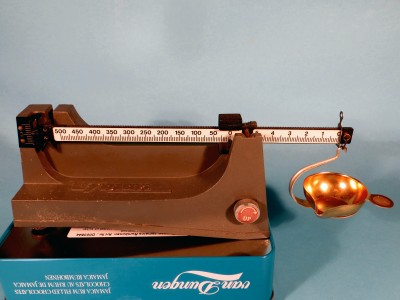
[move pointer over picture]
place a weight in the pan and get a renewed equilibrium
by moving the counterweights
| 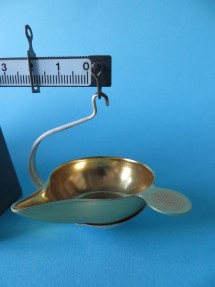
the gunpowder scale seems to be
made for right handed people
|
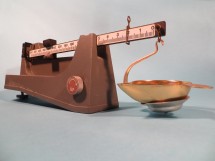
the suspension arm of the pan
bends too easily |
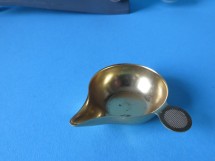
the pan for the gunpowder
|
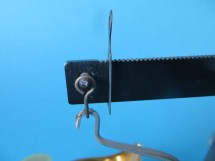
suspension of the pan
|
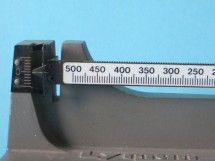
the weighing arm points exactly at zero
|
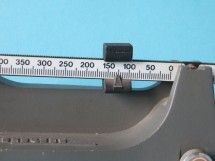
the heavy poise at 125 grains
|
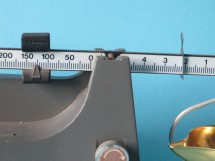
the light poise at 21 x 0.1 = 2.1 grains
|
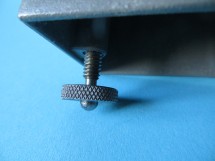
the zero leveling screw at the left
of the scale house |
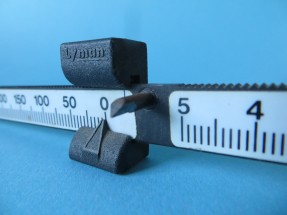
the name LYMAN is also at the top of the heavy poise
|
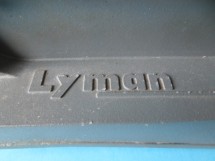
the name LYMAN is molded
at the scale house |
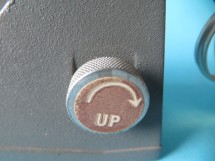
control knob to rotate the excenter and
lift the beam and its knife edge axis
|
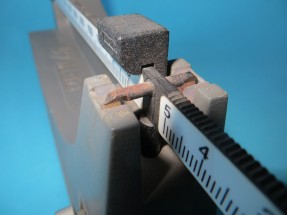
the vertical rod, just visible, has lifted the
knife edge axis out of its pans
|
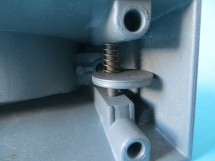
the excenter in the scale house
|























